This blog entry takes us from the coffee laden hills of San Agustin, via the jungle, to the high, rainy and (relatively) cold city of Pasto, within touching distance of the Ecuadorean border. This leg really has been one of contrasts – weather, landscape and people.
Our rest day in San Agustin wasn’t particularly restful thanks to a few old Colombian men using the hotel lobby as their private drinking den, so we left both feeling a little sluggish. A feeling not helped by the fact that we’d be spending most of the day on highway 45 – by all accounts a beautiful and quiet stretch, but highway nonetheless. After dropping down to the Rio Magdelena, we took a cheeky dirt shortcut to the village of Bruselas which cut out some tarmac and distance and avoided having to go through the bigger town of Pitalito.
Then it was onto the 45, and the big climb up and over into the land beyond – probably the most remote area we’ve experienced in Colombia. Apart from the highway, there wasn’t a lot else apart from jungle. Pura Selva as Manuel from the Casa de Ciclistas Medellin would say. On the way up, it started properly raining, our first significant rain in nearly 2 weeks, so there wasn’t a lot of hanging about and enjoying the view. Luckily though, the going was fairly easy and we were soon over the 2200m pass and donning our rain jackets for the descent.
By 1pm, we had done 70km – one of our fastest days so far – and it was time for lunch. We’d been passing by trout farms all day so there was one obvious contender when it came to the lunch menu choice (which is usually only a choice between chicken, pork or beef).

As this stretch is so remote, and the 150km between San Agustin and Mocoa was too far for us to do in one day, we’d spent quite a lot of time looking at where we could spend the night, finally settling on Hostel La Montana. Luckily, this was only a few hundred metres beyond our lunch stop, so we were able to enjoy a chilled out afternoon in this peaceful spot overlooking the jungle. Well, apart from the trucks thundering past on the 45.

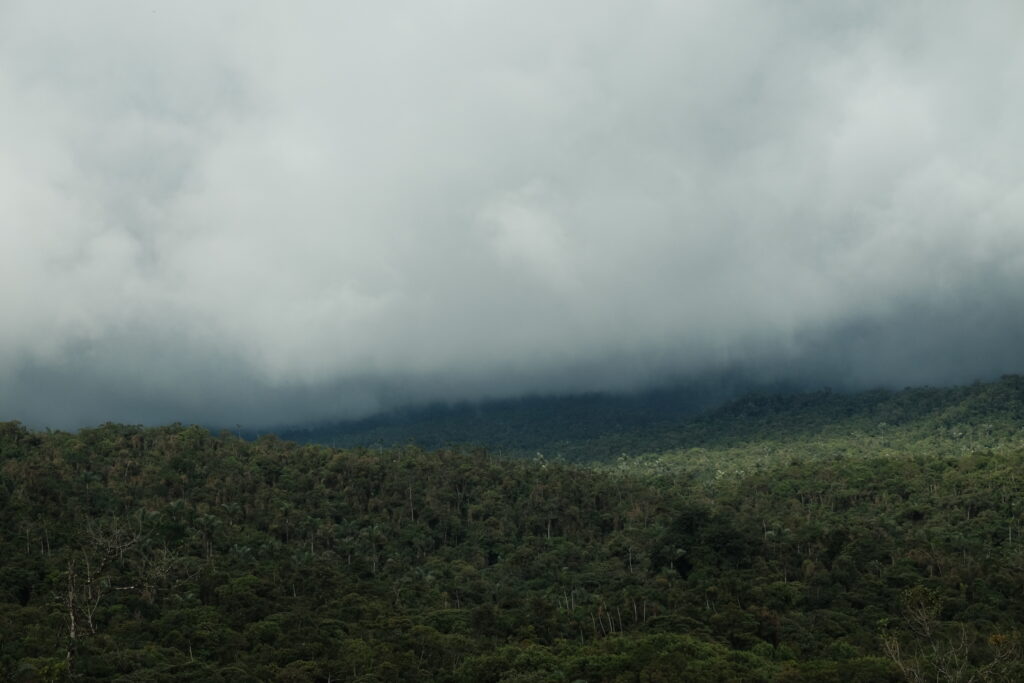

We had a very restful evening and sleep (much needed) and awoke the following day to blue skies. The Hostel’s location was ideal to split this leg to Mocoa in half – today, we’d have 80km of mostly downhill riding (still 1000m of climbing, mind) on tarmac to go.


We arrived in the outskirts of Mocoa just in time for a late lunch, followed by an ice cream in Mocoa itself. El’s sandals (which she had been so evangelical about at the start of the trip) had been progressively falling apart over the past few weeks – they really didn’t enjoy the river scrambling in Chaparral – so we decided to check out a few bike shops to see what flat pedal shoe options there were. In a massive stroke of luck, the first shop we walked into had one pair of flat pedal shoes – some Shimanos that were El’s size and perfect for our requirements. Deal!
We then continued for a few more km on the 45 to Nueva Betania and Casa Jager – the Casa de Ciclistas run by Ferney. Ferney spent 3 years riding around all the departments of Colombia accessible by road with his rather large german shepherd Jager in tow. Since 2019, when he returned from his trip, he’s been running different Casa de Ciclistas out of various houses in the Mocoa area and has hosted a huge number of cycle tourists in that time. It was great chatting to him about his trip and seeing his map of all the roads he cycled along with pictures of Jäger in each spot. All very inspirational. After seeing so many dogs in varying states of (in)health along the trip, it was so lovely to be in the company of someone who really loved his furry companions. The current Casa is super basic – no running water and no electricity either at the time we visited – but it’s a very relaxing place to stay and Ferney is a great resource for local route information.
Plus, the house is just a few hundred metres from the trailhead to the Fin Del Mundo waterfall, which is what we did the following day. Although it’s not cheap at 27,000COP per person (£5, ok, not that expensive for us westerners), it’s absolutely worth it our opinion, mainly for the excellent swimming and cliff jumping opportunities on the way to the main waterfall itself.

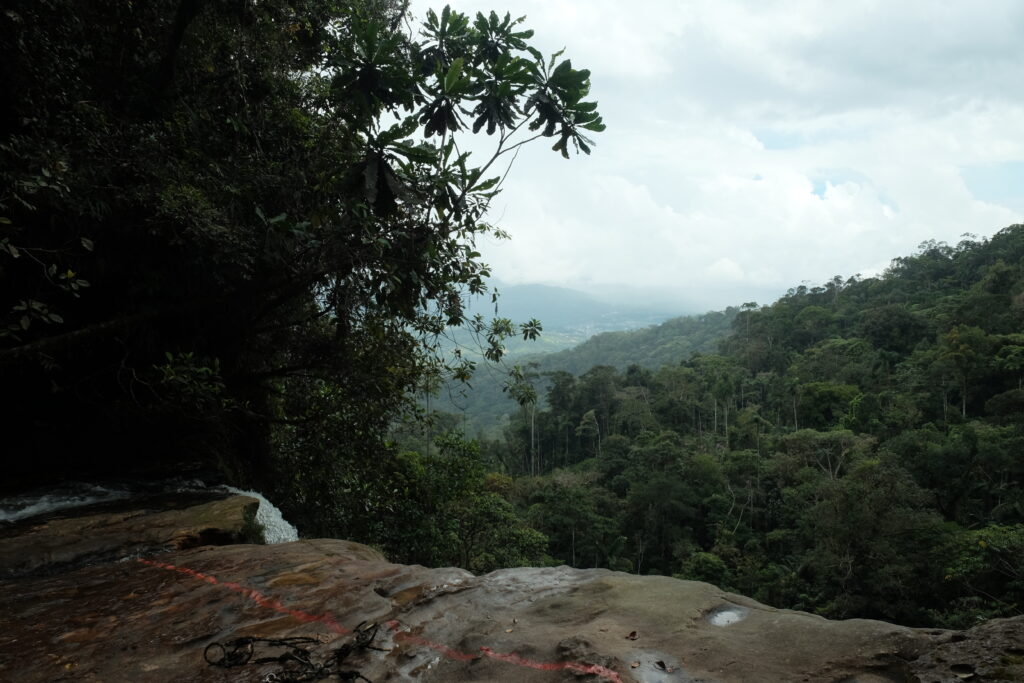
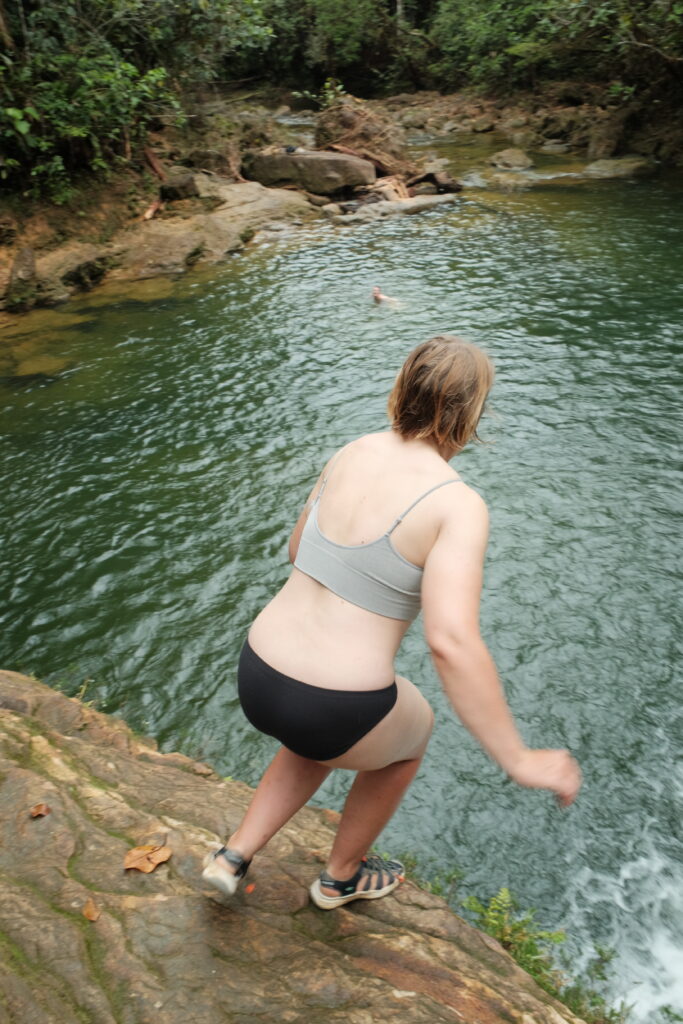
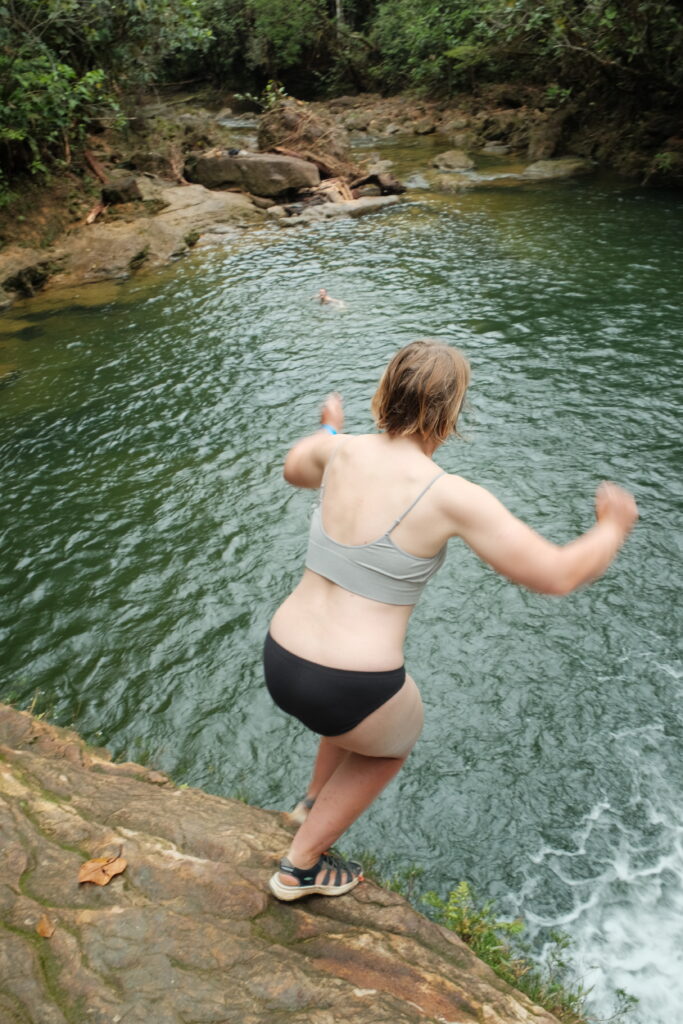
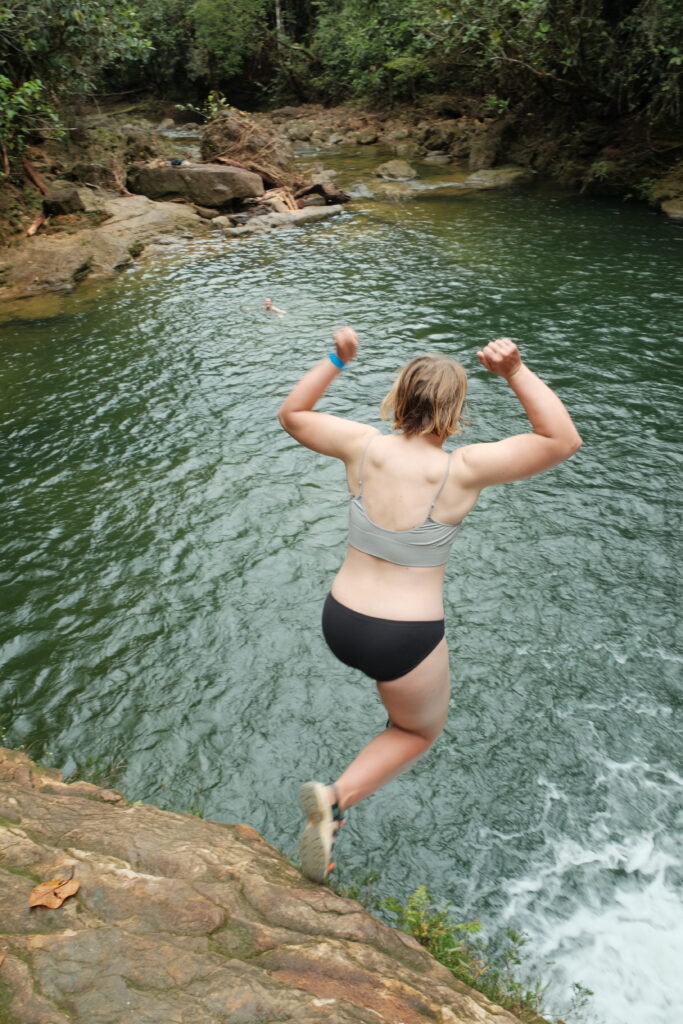
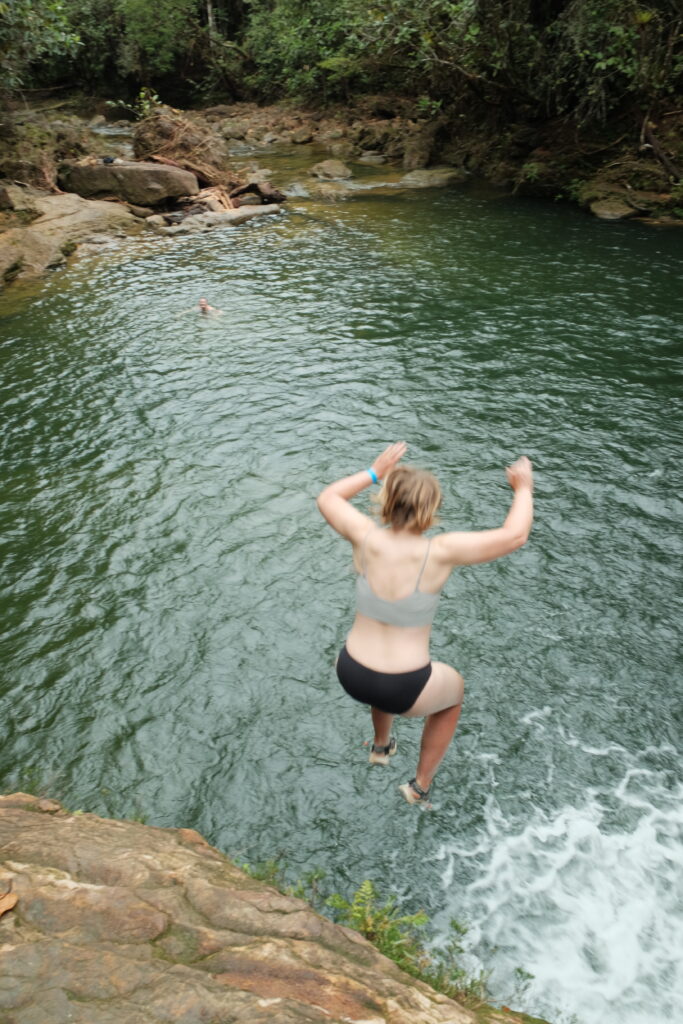

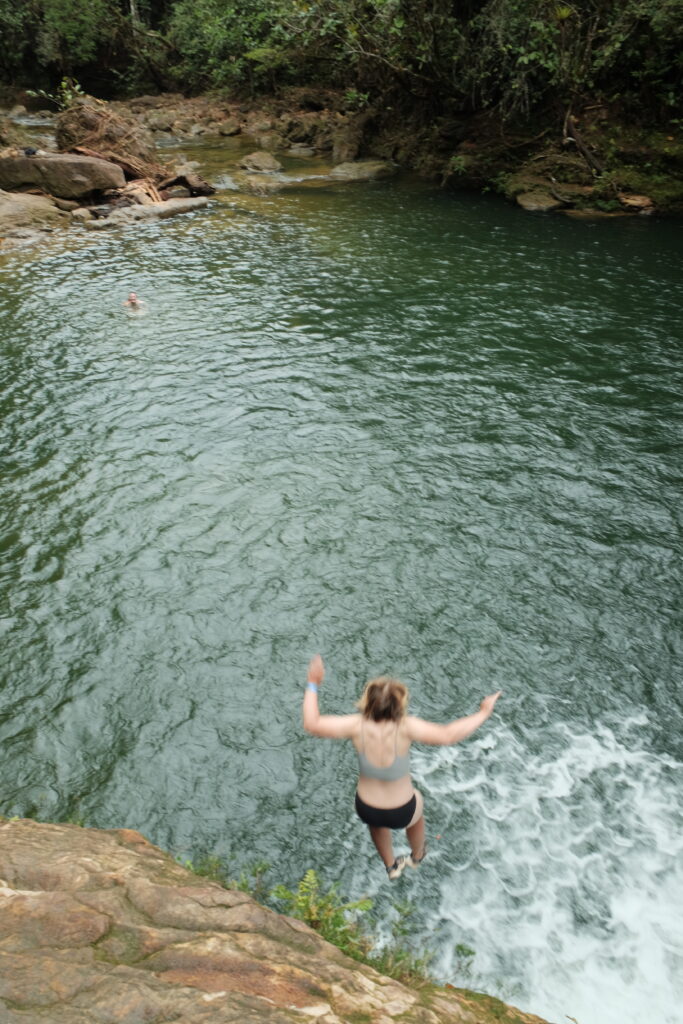
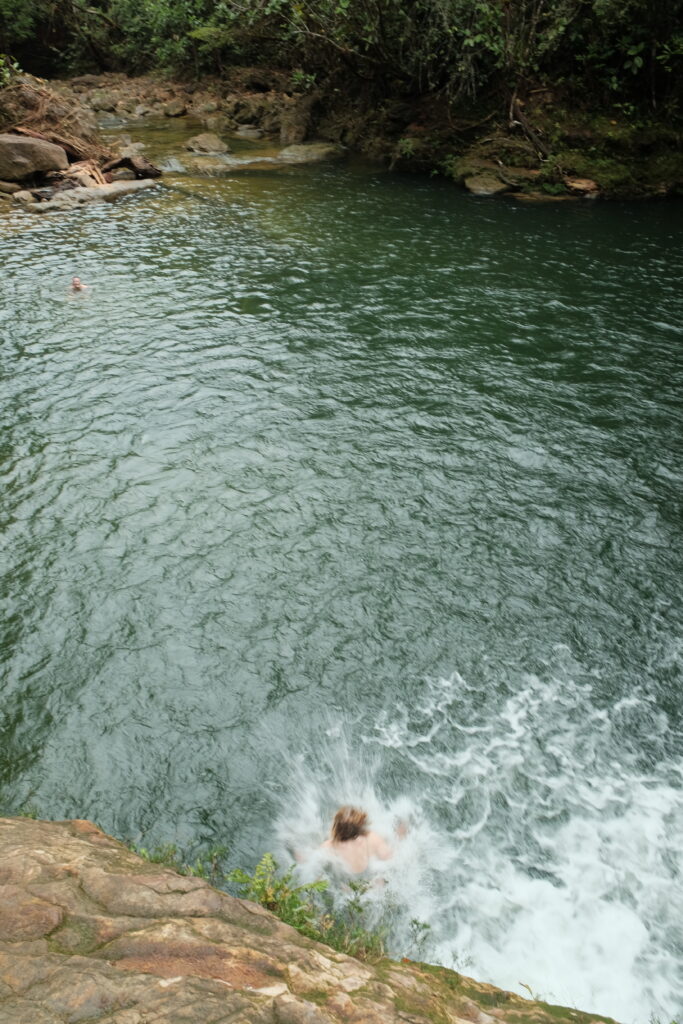

From Mocoa, we would take the infamous (amongst touring cyclists) Trampolin de la Muerte to Pasto. The first half of this 150km route is primarily on dirt, barely one bus width wide, and impossibly wiggly – all ingredients that make it extremely dangerous for motorised traffic (hence the name), but absolutely brilliant on a bike. Ferney had given us the safety briefing the night before:
- If you don’t see any cars coming the opposite way for a while, that means there has been a landslide so make for the nearest Parador (rest stop, usually with a restaurant or shop) and stay there
- If you leave a Parador and it starts raining heavily soon after, head straight back to the Parador
- Don’t camp anywhere other than Paradors as these are safe (from landslides and perhaps other nefarious activities)
- If in doubt – ask a Parador, they are all chatting with each other about the road conditions
- Always ride on the side of the mountain, every if it’s not the right hand side. That way you can’t be forced off the edge by oncoming traffic
With these thoughts in our minds, it was with some trepidation that we listened to the rain hit the tin roof for most of the night. It had still not left up when we woke the following morning. I asked Ferney if it was a stupid idea to set off given the weather. “Other travellers have set off in similar weather and made it” was his answer. Ok then, I suppose we should give it a go.
As luck would have it, the rain pretty much stopped as we walked outside for the obligatory photo of us with our bikes, and it pretty much stayed dry for the whole day as we tackled the first 2000m climb of the Trampolin. Whoop!

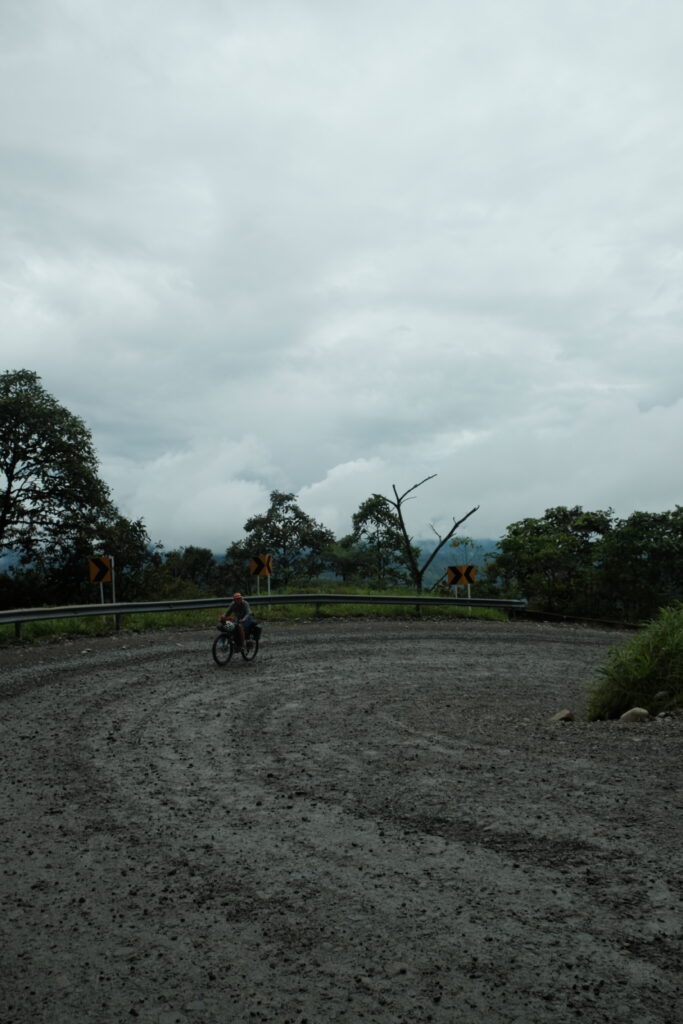


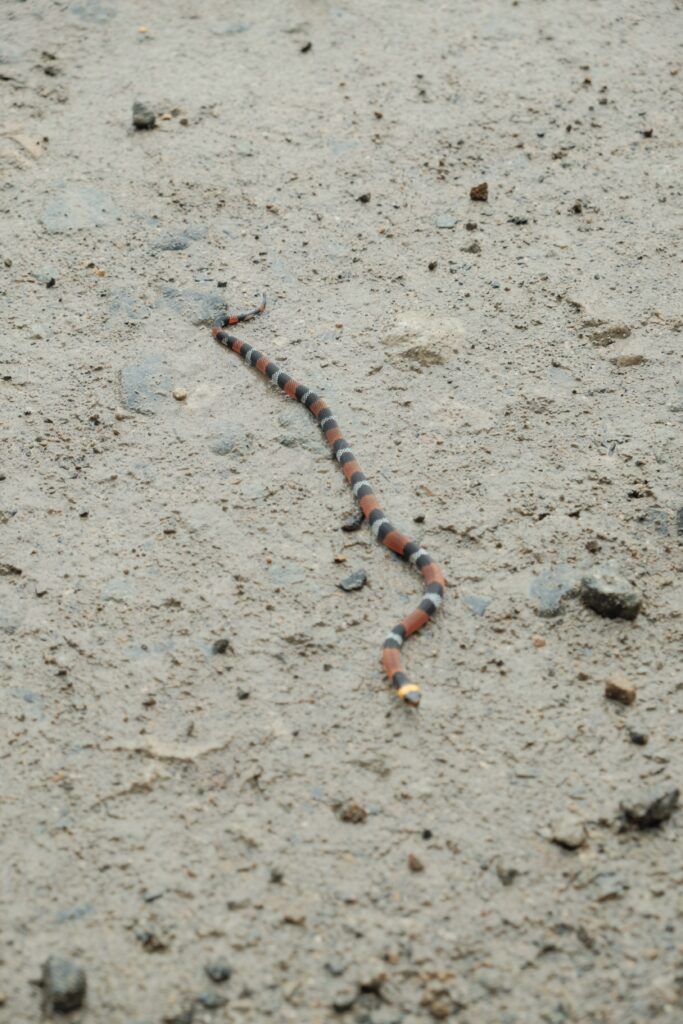
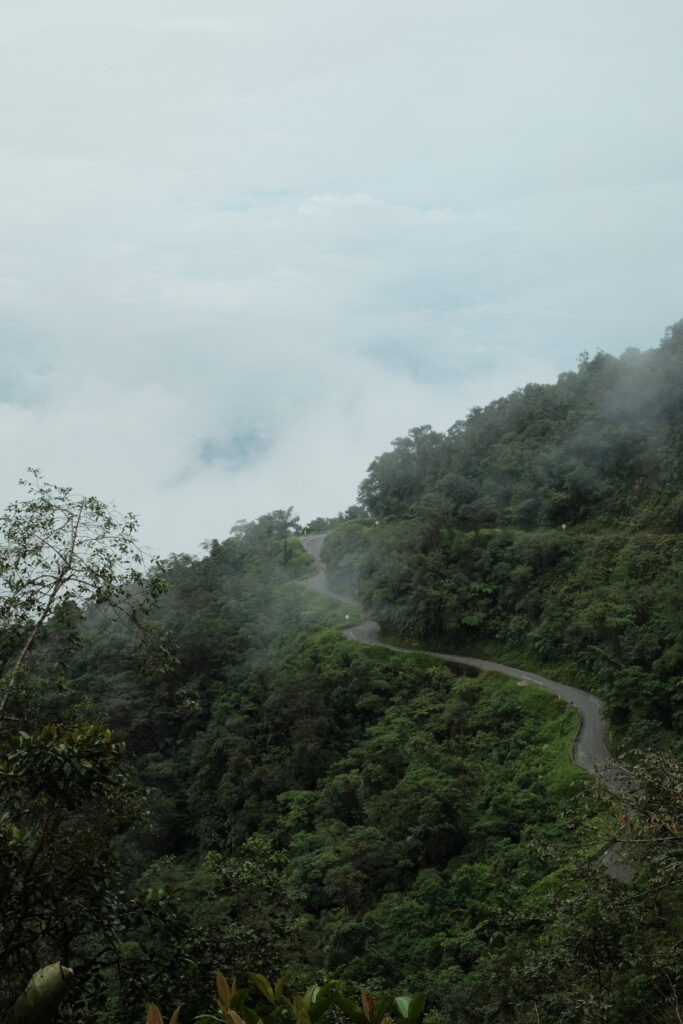

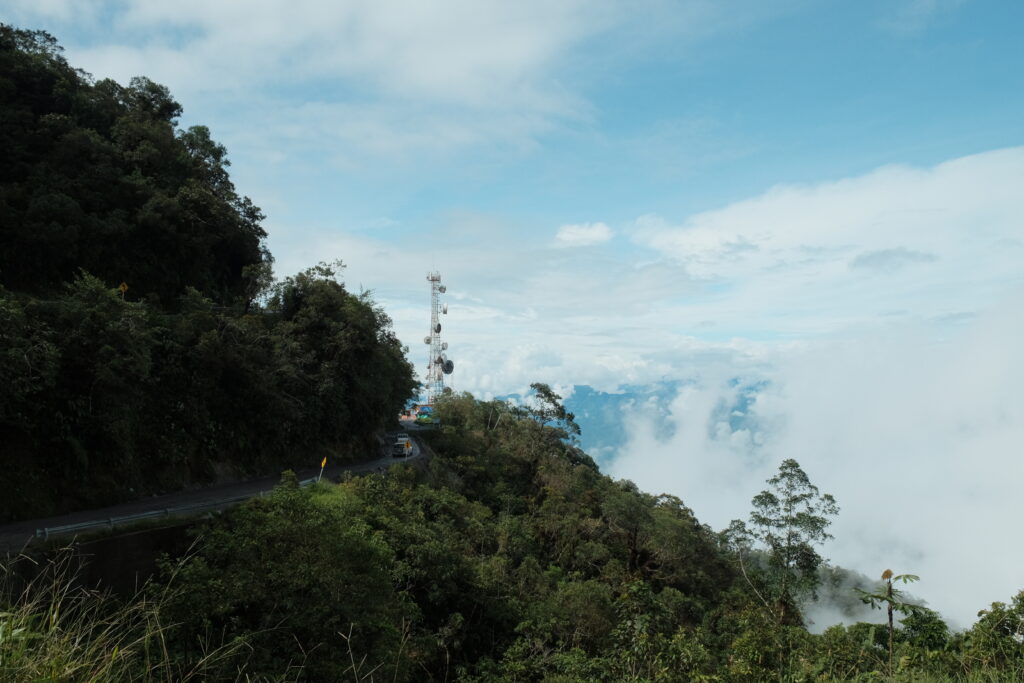
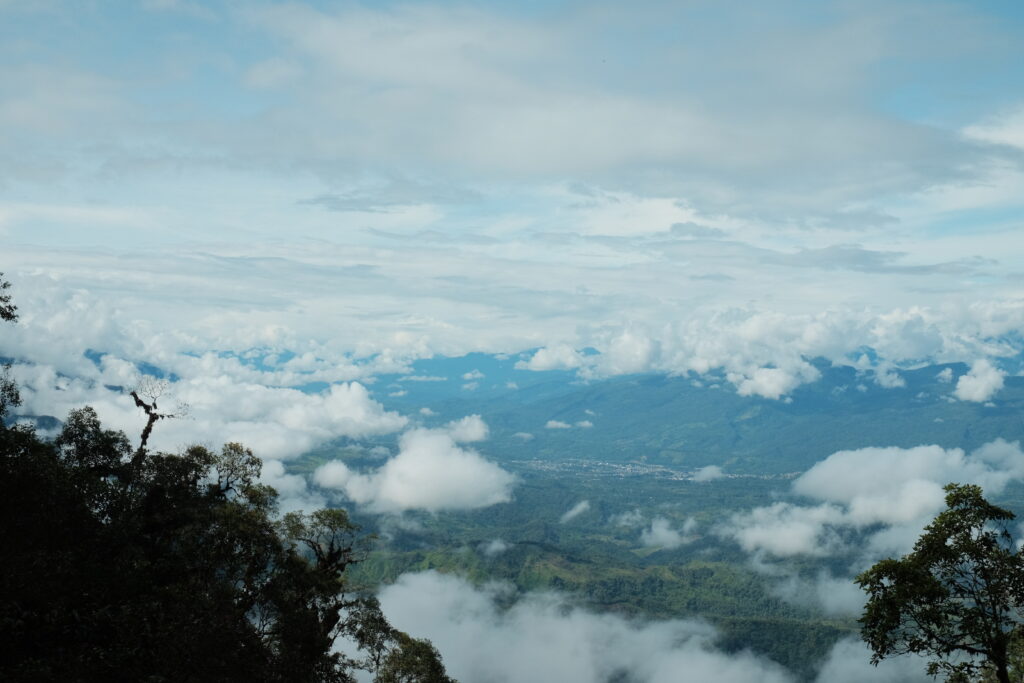
We spent that night in Las Cristalinas, a Parador about 5km over the top of the first hill. They have a shack above the roadside restaurant that is free for travelling cyclists, it even has a bed. It was very grimy though, the sort of place that makes you feel “ick”, and we would have probably just preferred somewhere flat to pitch our tent. Indeed, we found a much nicer looking and unlocked wood shed a few km down the road which seemed much more appetising – however, it’s not somewhere we would bet on staying as we’ve no idea if it’s always unlocked.
Despite not having a very restful night as a result of the general ickyness, we were thankful for the watertight roof as the rain bounced off it for most of the night. It was still raining as we set off the following morning for a few more downhill kilometres before tackling the 2nd hill of the Trampolin. At some point, I was riding along, thinking how quiet and peaceful everything was until I rounded a corner and saw all the parked cars and the reason for that tranquility – a landslide had completely blocked the road. Based on when the opposing traffic stopped, we figured the landslide must have only been triggered about 10 minutes before we arrived at that very spot. This really brought home to us the danger of this road – although on a bike, you can easily squeeze past traffic and are unlikely to ride off the edge, the hills could literally collapse onto you (or possibly under you) at any moment in so many spots. It’s a road to take seriously and to ride a quickly as possible if it’s raining, or has recently rained heavily.
Despite every other person in this country seemingly have a machete dangling off their waist, there was only one machete amongst the stopped cars and motos on our side, so the clearing operation proceeded very slowly. The now-exposed cliff above the road also threatened to collapse further at any given moment. Every so often, a bit of rock or dirt would tumble down, people would shout and run for safety. It was all very tense. While it looked like we could get our bikes up and over if we took all the luggage off, the threat of further rockfall kept us from giving it a go. That is, until a Venezuelan in one of the trucks offered to help us get our bikes over in return for coffee money (the next Parador was just round the corner). With his confidence and help, we managed to get the bikes over and were on our way again. Phew, it felt like we had escaped something there.

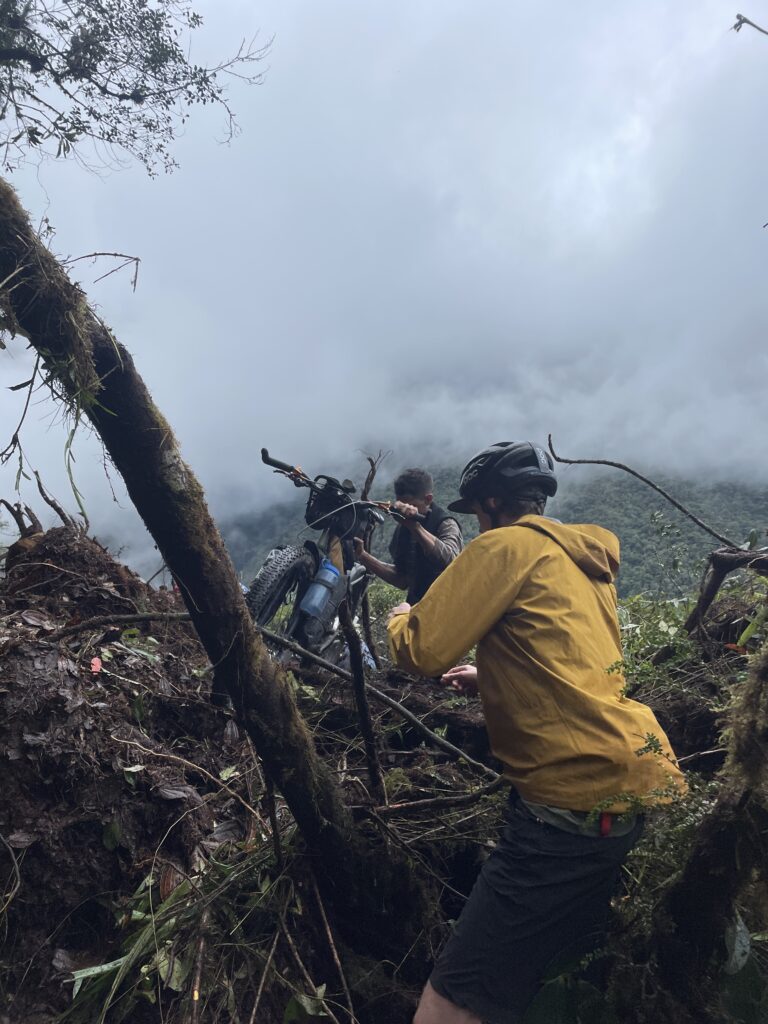
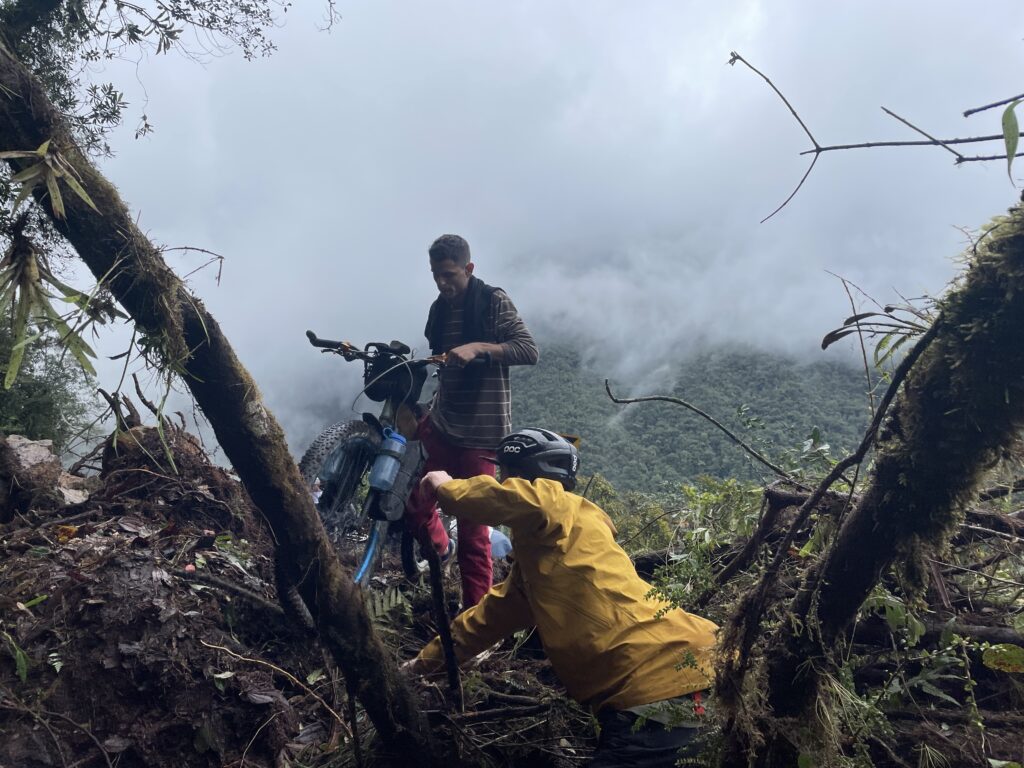

Having narrowly escaped getting stuck at a landslide or worse, we still had most of the 2nd of the Trampolin’s bounces to get until we reached the Sibundoy valley and our planned destination for the night. It was at this point that we had our first big argument of the trip. I was spooked by the landslide and wanted to get out of the danger area asap by using a rope to tow El up the hill; El was adamant she would pedal the whole thing under her own steam. We both thought the other was being selfish and I pedalled off separately in a huff. It’s time like these, when it’s wet and cold, that our mismatch in speeds becomes more difficult to reconcile as I get cold and my patience wears thin. No doubt, this situation was also exacerbated by the crap night’s sleep we’d both had.
Sense eventually prevailed near the top of the hill and I stopped to wait at a parador. We teamed back up for a cold descent into San Francisco, where we had a debrief and partial makeup in a bakery over hot coffee and 3 donut-type thingies (each). We continued on tarmac until Colon, to find the hotel we’d aimed for full, then continued further to Santiago where we found a room in the only open hotel for 30,000COP (£6). It was actually alright!
Maybe it was the frank discussions we’d had the previous day, or the fact that we were both so tired, but we both slept really well that night and woke up energised for the final couple of days to Pasto. Since we were expecting a package to arrive in Pasto in a few days time, we were in no rush and committed to spending a night at Laguna de la Cocha, adding a day onto the typical Trampolin schedule. What a great decision that proved to be.
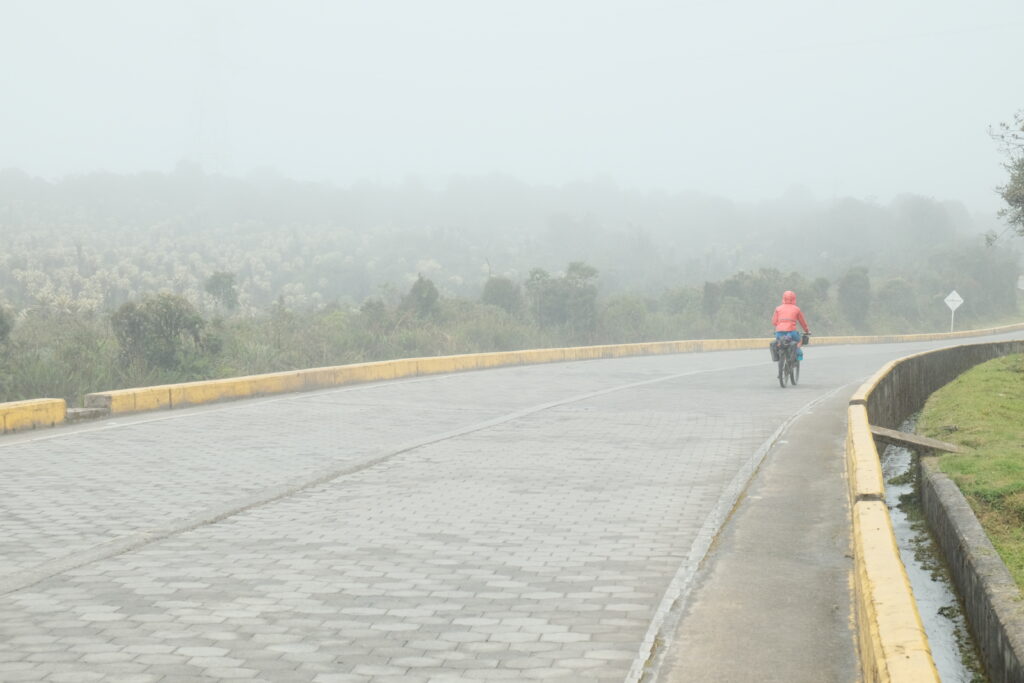
After an awesome road decent into El Encano where we had another delicious trout lunch, we set off around the western side of Laguna de la Cocha to check out a couple of “beaches” we had spotted on google maps. This lake sits in the centre of a massive ancient volcanic crater at around 2700m – it is amazingly picturesque when the rain isn’t blowing through, which is does on a very regular basis!

We missed the first beach and decided to push straight onto the second one. Pulling up to it, there was only a small section of “beach” and the adjacent area didn’t look that appealing to camp in. I mean, it would’ve done, but it wasn’t the picturesque lakeside camp we had envisaged. At this point, the bike touring gods intervened and a man got out of his car.
[En Espanol]
“Are you looking for place to camp?”
“Yes!”
“There’s a much better spot about 30 minutes further down the track. It’s a bigger beach, it’ll be warmer, and no one will bother you there”
Great! So off we set off. 5 minutes later, the track we had been riding along narrowed into singletrack. Hmm, shall we continue? Well, we’re committed now. On we continued for the best part of an hour (we’re always way slower than people expect, or Colombians are over optimistic with their estimation of time) along this amazing lakeside singletrack until, finally, we rounded a bluff and sighted a small grouping of houses and a small beach with a few boats. That must be our spot! We dropped down, took a left off the track and pulled up to the beach. We couldn’t believe our luck. A small strip of grass down by the lake, perfect for pitching a tent. The adjacent sign suggested that wild camping was actually allowed and encouraged here.
(N.B. For anyone else travelling to this area, this beach is known as “Playa la Sirena” locally, but appears as “Playa Blanca” on google maps.)
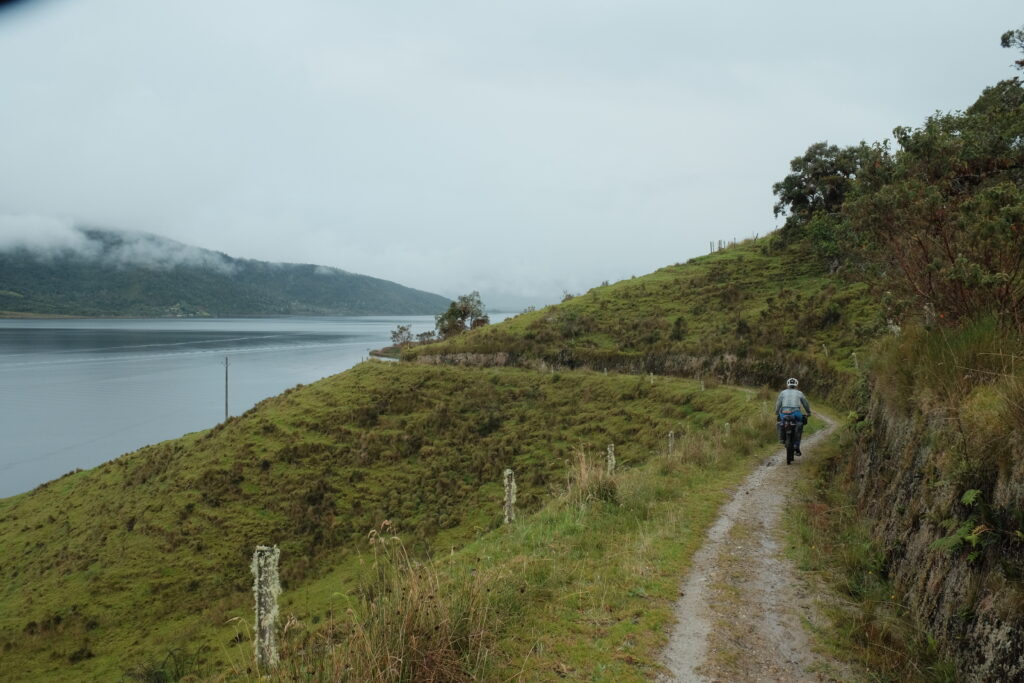

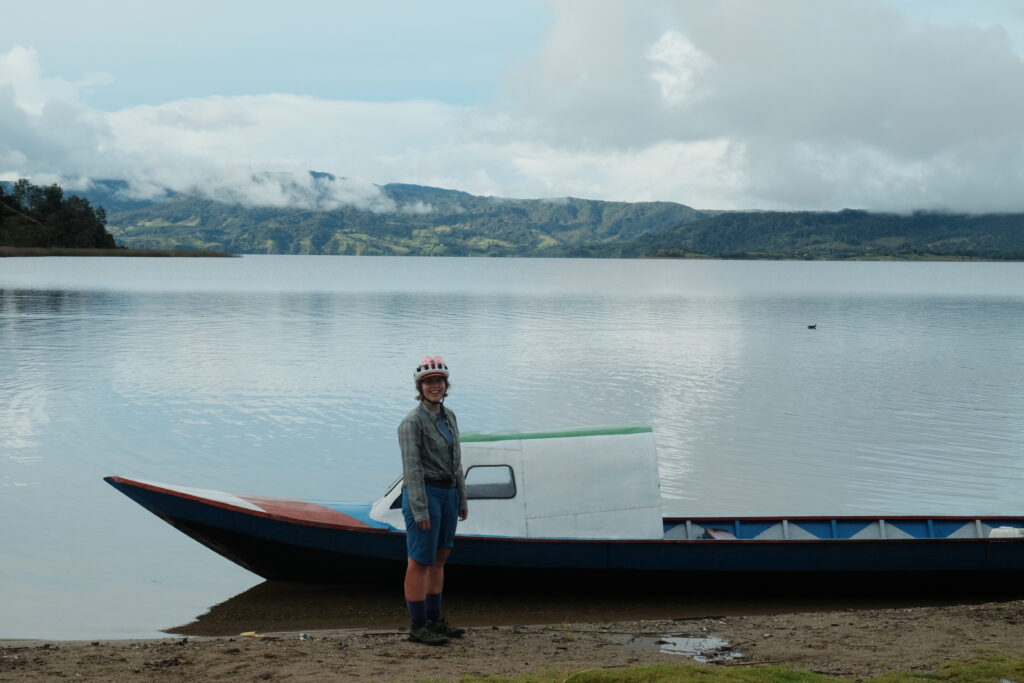
Thankful that we hadn’t made any plans and just said yes when the opportunity presented itself, we watched the local fishermen set their lines as the sun set before retreating to our tent. It’s unexpected, unplanned moments like this that make bike touring such a special way of seeing the world. The night itself wasn’t without a slightly surreal moment when a man turned up in the dark to get his wheelbarrow…which we’d tied our tent to and hung our wet pants from our swim on! After apologising profusely, we liberated his wheelbarrow from our tent and he stuck it in his boat and motored off to who knows where.
We’d talked about potentially trying to buy a boat ride back to the main port the following morning, but all the boats were full with locals who’d descended down from the surrounding hills with their milk pails. These were getting transported to town where they would be turned into cheese. We had the usual where are you from conversation with one of them and I think it blew his mind that there were two people from the UK camping on this beach!
Without a boat ride, we had to ride back out the way we came in. Poor us! The morning was brighter than the previous day, although waves of rain were still intermittently blowing in from the South.
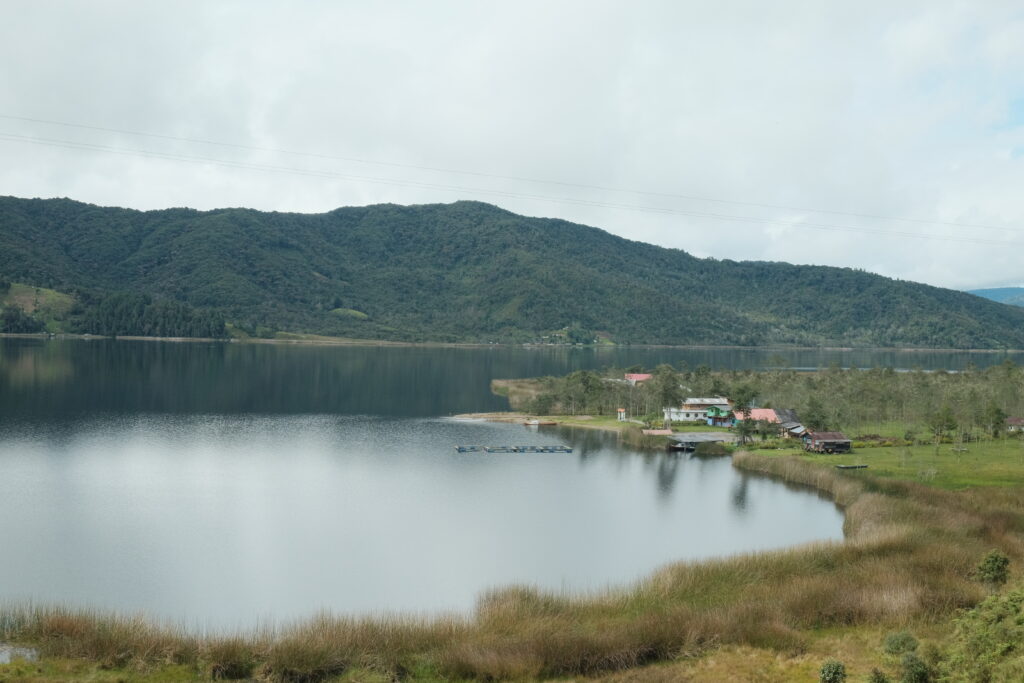

Making it back to El Encano, we had one “short” tarmac hill to get over before dropping into Pasto, amid some torrential rain. We’ve been staying at Hotel Koala Inn for the past couple of days, recovering, sorting bikes out and doing all the usual admin required on a trip such as this. Instead of taking the usual Pan Am Highway route directly to the border from here, we’ve planned a few side trips up some volcanos which I’m very excited about. But that is a story for the next blog post. For now, we are up to date with where we are on the road, for the first time in a long time!
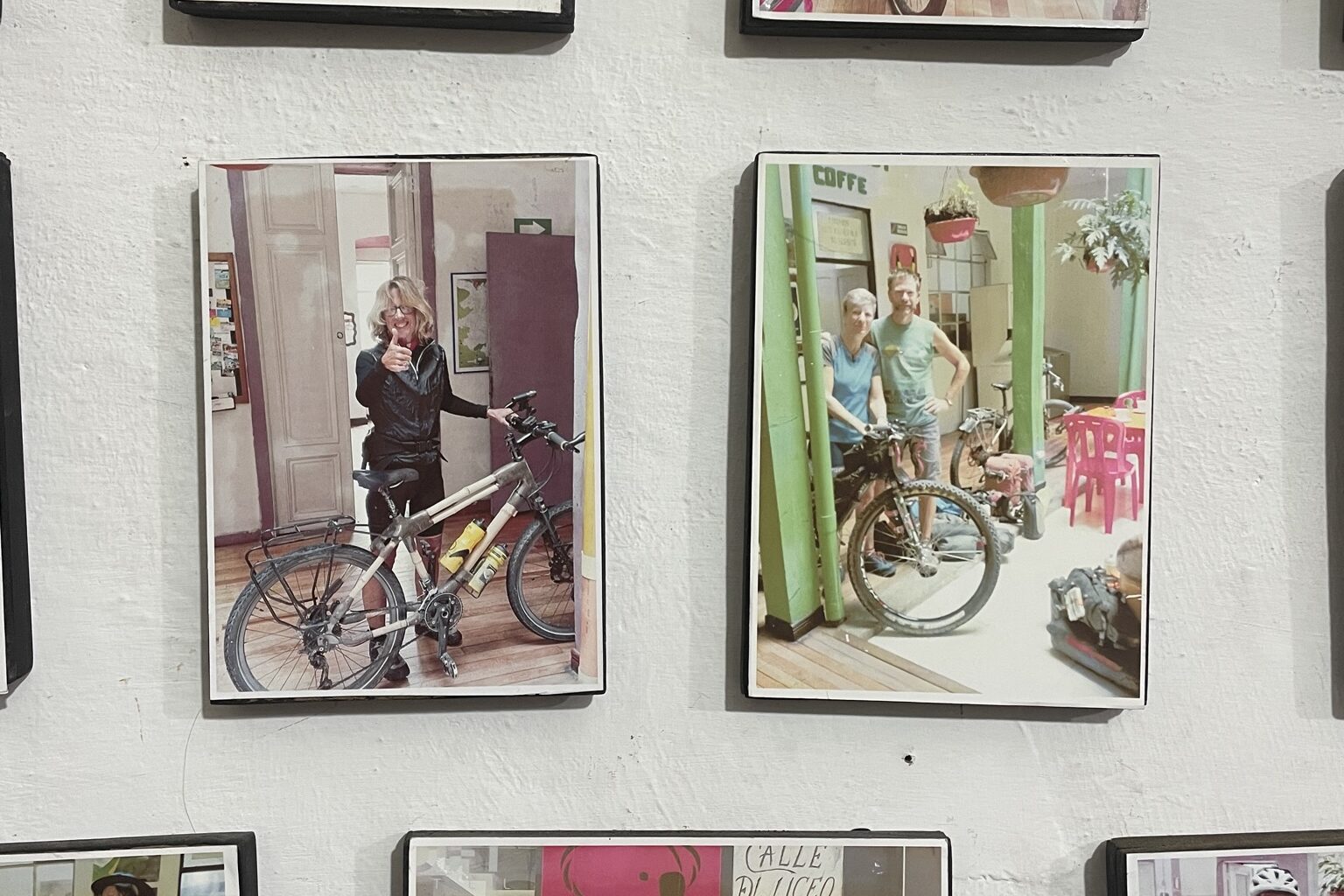
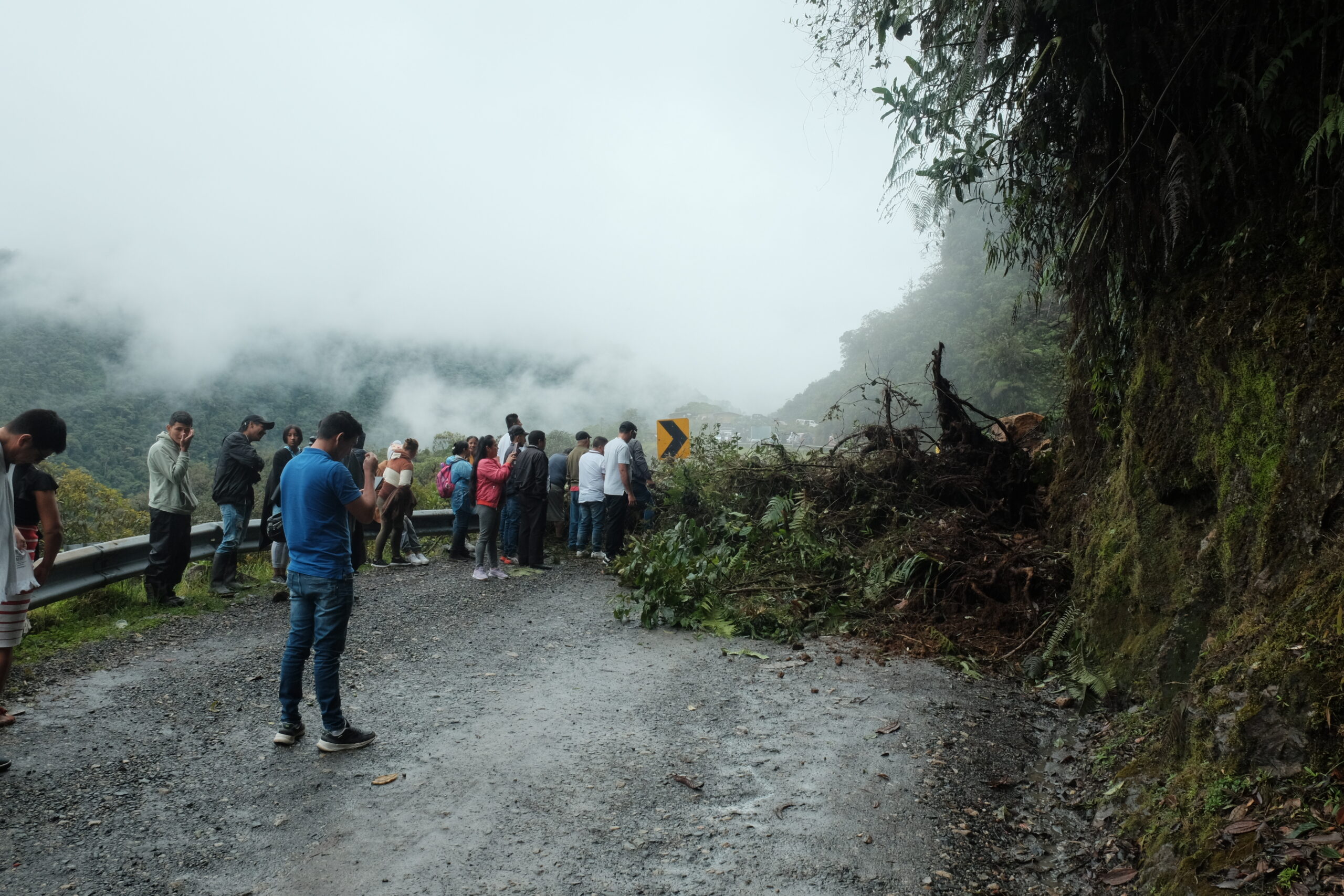
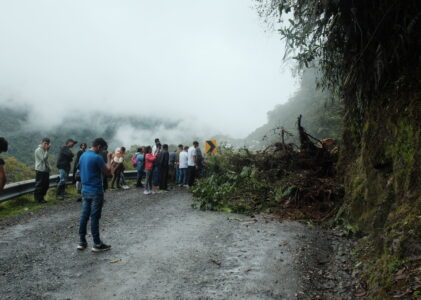
Loving this blog, getting a real feeling of how your trip is going.
Thanks Mark! We’re trying to be as true to the experience as possible